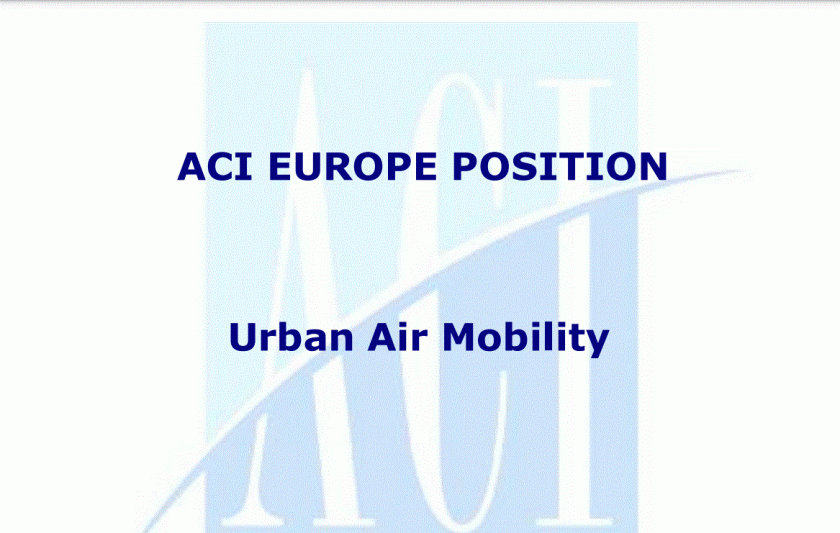European airport trade association ACI Europe has published a position paper on urban air mobility (UAM), highlighting its view on regulations and operations.
Here are some of the key highlights:
Vertiports within airports:
“It should be clarified whether vertiports located on the landside of an airport, or off-airport, will be considered separate entities or as integral parts of the aerodrome. This will have implications for regulatory compliance for the aerodrome operator. At the other end of the route, vertiports in city locations will require adequate space in order for the system to be viable. Cooperation with local councils is therefore essential to enable development of UAM. At a city level, planning authorities are the best placed to quantify the potential impact of urban air mobility and study how the vertiport network could integrate within a broader mobility strategy to achieve strategic objectives such as reducing commuting times, reducing air pollution and enhancing connectivity.”
Weather:
“The weather and visibility conditions in which eVTOLs can operate requires clarification, as the business case will be undermined if they can only operate in fair conditions. It will need to be ensured that collision with obstacles can be prevented, as well as clarification on the level and type of Rescue and Firefighting Services response that will be needed, for instance through application of ICAO Annex 14 Volume II. It must be borne in mind in this context that the vertiport may be on top of a structure such as the terminal or a multi-storey car park. The need for any additional procedures in airport emergency plans also requires clarification, as well as ensuring the safe operation of eVTOLs in busy urban, populated areas. The development of safety rules and procedures for UAM must also take into account wildlife and bird strike risks.”
Security:
“While UAM will be operated and deployed differently from traditional commercial aviation, the security requirements that are applied to them may be very similar. UAM’s business case requires smooth and speedy security procedures providing an adequate level of protection. However, for certain types of traffic (e.g. aircraft under 15T MTOM, helicopters, aerial work…) it is already allowed to set alternative security procedures on the basis of a local risk assessment. This existing regulatory framework should be sufficient to deploy several use cases foreseen for UAMs.”
Hold baggage:
“Where passengers and hold baggage are arriving unscreened at the airport, they will have to be screened either through the normal passenger/baggage flow or through specific transfer checkpoints or hold baggage injection point. Hybrid scenarios can also be envisioned. Hold baggage could be screened at the vertiport of departure, while passengers are not, for instance. Alternatively, hold baggage could be screened in the UAM’s “hold” itself through technology such as Explosive Vapour Detection (lightweight screening solutions which are currently in development for AVSEC use). Such a scenario would require amendment to the Aviation Security Regulation.”
Funding for counter-UAS
“Funding support is important also for airports which seek to develop Counter-UAS systems to protect airports and UAM from noncooperative drones. More dual-use support could come from military institutions to ensure monitoring and countering solutions. Devices for C-UAS and cybersecurity should be available in the market to ensure greater physical protection, and to give private investors in airports, vertiports and UAM greater certainty and security over their investments. These systems should take into account the integration between Unmanned Traffic Management systems and U-Space service provision.”
For more information
https://www.aci-europe.org/downloads/resources/2022%2003_ACI%20EUROPE%20Position%20on%20Urban%20Air%20Mobility.pdf




